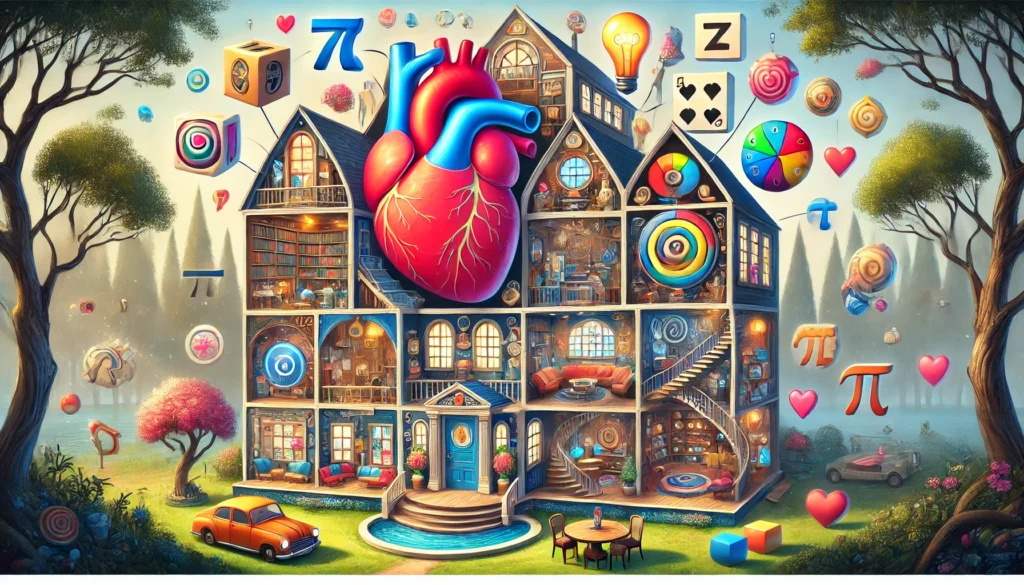One late night, Steve Jobs had an important email to send. He started his Apple computer. During this process, Steve felt that the operating system was taking too long to boot. The next day, Steve reached his office and met with engineer Larry Kenyon. He told Larry that, by any means, they needed to reduce the booting time of their operating system. Larry replied that this was impossible because data speed had its own limitations. The hard disk could not run any faster than it did, and the operating system must need that much time.
Steve Jobs stopped Larry mid-speech and said, “Larry, listen to me carefully. If I told you that starting the computer 10 seconds earlier could save someone’s life, could you do it then?” Larry suddenly became silent and listened to Jobs attentively. Steve started to write on the whiteboard and said, “Larry, imagine 50 million people using our operating system twice a day. By shortening the boot time by 10 seconds, you can save 100 million hours of time annually. On the other hand, a person spends approximately 350,000 hours awake during their 60-year lifetime. That means 100 million hours is equal to 30 lives saved annually.” Steve convinced Larry that his work was extremely important. They could save 30 lives every year simply by lowering the boot time by 10 seconds.Larry was hypnotized, as if he had learned a new truth.
After two weeks, Larry had not only decreased the boot time by ten seconds, but also by 28. Larry initially viewed the situation through the lens of technological restrictions, but when he considered saving 30 lives, he discovered a new purpose. His mind began to think of new answers and innovations with renewed optimism. He identified a new method of boot loading and, to his delight, decreased the boot time to 28 seconds rather than only 10. Steve jobs said –Reality is malleable. If you just push and push and push, it will bend to your will. And this process is called the Reality Distortion Field.
What is Reality Distortion Field
“Here’s to the crazy ones, the misfits, the rebels, the troublemakers… the ones who see things differently.” These classic lines from Apple’s “Think Different” ad capture the core of the Reality Distortion Field (RDF). RDF was introduced to explain
Bud Tribble of Apple – invented the phrase Reality Distortion Field in 1981 to describe Steve Jobs’ charismatic capacity to convince himself and others to believe nearly anything through a combination of charm, confidence, and persistence. This concept has since become synonymous with the way Jobs managed to inspire and lead his teams at Apple.
Successful and super-successful people create a reality distortion field around themselves. First, they consider and grasp their vision—what they hope to accomplish in one week, one month, six months, or five years. They then accept as true any facts that support their vision and discard those that go against it. They block all the negative factors from their thinking field. Steve Jobs said, “Anything that does not harmonize must go!”
Understand this quote through another story. When the iPhone Nano succeeded, Steve was unhappy because of its plastic display, which scratched easily. It couldn’t be replaced with glass because, at that time, glass would break easily if dropped. Steve met with the CEO of Corning Corporation, Wendell Weeks. This meeting was historical. At first, Steve kept talking about glass technology, making them understand about nano glass. Weeks said, “Steve, stop teaching me about glass. Be calm and listen to me carefully. In 1960, we already discovered a way to make stronger glass. The glass is so strong that we named it Gorilla Glass.” Weeks convinced Steve about the quality and strength of the glass. As soon as Steve understood, he placed a massive order for the glass for his phone screens, which had to be fulfilled within the next six months. Weeks said, “Steve, this is impossible. We can’t fulfill such a big order even with all our factories combined.” Steve looked into Weeks’ eyes and said, “Weeks, you can do it. Just accept that it is possible and then use your mind to find out how you will do it.” Seeing the belief in Steve’s eyes, Weeks was convinced. The next day, Weeks summoned his managers and engineers, stopped the work on LCD, and started working on making Gorilla Glass. After two years, every phone was using Gorilla Glass. Weeks later said, “I could not believe how we fulfilled this massive order within six months.” This is the magic of the reality distortion field. At first, Steve thought he needed a new technology to build stronger glass, but the moment he learned that this technology already existed, he immediately set his goal.
Nolan Bushnell (founder of Atari): “Steve was a person who would set impossible deadlines and expect you to meet them. And somehow, you did.”
How did Steve Jobs learn about the reality distortion field?
During his college time, Steve Jobs met Robert Friedland. At that time, Robert told Steve about a personal force field, which could help one block fear, doubts, and hesitation, and move towards their goals while altering their personality. Steve Jobs started to impose the RDF method on himself. Through his imagination, he envisioned a field around himself where everything happened according to his vision. The right opportunities and people came to him automatically, and difficulties vanished. Before meeting Robert, Steve was a shy and introverted person. But after meeting Robert, Steve’s personality changed completely. He became highly confident. In his biography, Steve says, “By RDF, my point of view towards the world completely changed. My mind changed. It turned me onto a different level of consciousness. I realized that if a human does not doubt himself, he can do even the impossible and bend reality. Look around yourself; whatever technology exists today was done by humans like you and me.”
key characteristics of RDF:
1 Persuasiveness
Unwavering Conviction: At the heart of RDF lies an exceptional ability to influence. Steve Jobs had a firm belief in his ideas, which made him extremely influential. When he presented a vision or idea, his confidence was so strong that it always defeated any fears or skepticism.
Infectious Enthusiasm:Jobs had infectious excitement. When he believed in a project, his enthusiasm flowed to his team, clients, and even competitors. This excitement helped mobilize others around his vision, resulting in a collective momentum that pushed his projects ahead.
Narrative Crafting: The effective use of storytelling was a crucial aspect of Jobs’ persuasive ability. He could craft fascinating narratives around products and ideas, making them not just innovations but essential parts of the future. This storytelling ability made people see the potential in his vision and want to be a part of it.
2. Reality Alteration
Redefining Boundaries: RDF involves shifting perceptions of what is possible. Jobs had a talent for pushing the limits of technology and design, challenging his team to do what appeared unattainable or impossible. This feature frequently resulted in ground-breaking innovations.
Creating New Standards:Jobs used RDF to set new industry standards. Whether it was the Macintosh’s intuitive user interface or the elegant design of the iPhone, he set new definitions for user expectations and set benchmarks that others aimed to match.
Perceptual Shifts: Jobs could make people see the world differently. For instance, before the iPod, the idea of carrying thousands of songs in your pocket was unthinkable. Through RDF, Jobs made this not only seem possible but essential, transforming how people perceived and interacted with technology.
3. Intense Focus
Laser-like Precision: RDF is characterized by an intense focus on the vision. Jobs’ attention to detail was legendary. He was involved in every aspect of product development, from design to functionality, ensuring that his vision was realized with precision.
Relentless Pursuit of Perfection: Jobs’ RDF motivated him to chase perfection ceaselessly. He pushed his teams to their limits, frequently rejecting what others thought was good enough until it satisfied his high standards. This constant effort frequently resulted in the creation of things that were both inventive and meticulously manufactured.
Priority on Quality: The RDF placed great emphasis on quality. Jobs thought that developing the best product was the most successful marketing technique. This emphasis on quality above quantity made Apple’s products stand out.
4. Charismatic Leadership
Magnetic Personality: Jobs’ charisma was a significant element of RDF. His personality drew people in, making them eager to listen, follow, and be a part of his vision. This magnetic presence helped him build strong, dedicated teams.
Visionary Thinking: Jobs’ ability to think ahead and envision the future was a critical aspect of RDF. He could see opportunities and potential that others missed, positioning Apple as a leader in innovation.
Inspiring Others: RDF involves inspiring others to see and believe in the vision. Jobs had a unique ability to make people feel that they were part of something larger than themselves, motivating them to work harder and achieve more than they thought possible.
5. Distortion of Perception
Selective Reality: RDF often involves creating a selective reality where only the positives are emphasized. Jobs could highlight the strengths and potential of a project, downplaying or ignoring its weaknesses, which helped maintain morale and focus.
Temporary Suspension of Doubt: RDF can temporarily suspend doubt and skepticism, allowing teams to push forward with ambitious goals. Jobs’ confidence in his vision helped his team overcome obstacles and stay committed to the project, even when challenges seemed insurmountable.
Creating Urgency: Jobs could create a sense of urgency around his vision. This urgency compelled his team to act quickly and decisively, often leading to rapid development and innovation.
How to create a reality distortion field? We need three things within us:
- Willpower: The belief that the goal we choose must be achieved. Stay committed to your vision. Be ready to do whatever it takes for this vision.
- Acceptance: Believe that your imagination is more powerful than reality. What happens in reality is not as important as how we perceive it.
- Passion: Feel excitement for your goal and understand its importance in your life. If you feel stuck and frustrated, think about how many opportunities will open up once you achieve your goal. How many things will become easier for you? How much of a confidence boost will you get? Think about the new chapter in your life that will start after completing this challenge.
Albert Einstein said, “Reality is just a dream”…Your imagination and thoughts are bigger than your reality. By changing your perspective towards your challenges and abilities, you can achieve more than you ever imagined. Transform your life by creating excitement to win your challenges. If you face difficulties that seem insurmountable, shift your focus from the difficulties and think about the opportunities that will open up once you overcome them. Ask yourself what your barriers are teaching you. Keep your goal in front of your vision and be ready to do whatever it takes to achieve it. The more angles you consider for your goal, the closer it will come to you.



